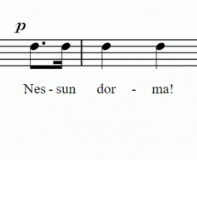My house exploded
-
Recently Browsing 0 members
- No registered users viewing this page.
-
Topics
-
Popular Contributors
-
Latest posts...
-
38
Do you guys feel good about this ,the reporter says to ICE agents as…
First of all, I never said "most" of anything. That is your addition. And second, I never said we "Need" brown people to do our dirty work any more than we "Need" the kids to do it. But the work "needs" to be done. Who do you know who is willing to do dirty work in the sun and rain for a short time? The only ones I know do it as a way of life and are willing to move around the country following the harvest seasons, living in tents in areas where there isn't any other accommodations. -
3
Rub, Tug, and a Plumbing Surprise: Welcome to Thailand, Rupert!
Most definitely, ineffectually disguised behind a very unconvincing cheeky chappie cockney accent.- 1
-

-
154
Tourism Tourism Shock: Thailand's Visitor Numbers See Alarming Plunge
Cleaning up the air is at the top of my wish list buI fear that it will never happen. -
1
Trump’s Got Beef with Bruce and a Crush on Taylor
No love lost between either man. https://www.nj.com/entertainment/music/2016/09/bruce_springsteen_donald_trump_moron.html https://www.rollingstone.com/music/music-news/bruce-springsteen-calls-donald-trump-a-moron-192439/ It's rather old news. Wonder when Kid Rock will have a whinge. https://www.theguardian.com/us-news/2025/may/15/kid-rock-restaurant-ice-raids -
154
Tourism Tourism Shock: Thailand's Visitor Numbers See Alarming Plunge
Chiang Mai is not on the way between Bangkok and Nong Khai! Chiang Mai is one of the rare exceptions, as I mentioned, with having a walkable centre. Not that large though, and dwarfed by the rest of the city. On that same line, I would also mention Ayutthaya. These are 2 cities having kept an interesting and walkable centre, left from centuries past. Possibly Sukhothai? I cannot remember, last time I went there was 40+ years ago. But again, how could that compare with the dozens, if not 100's of beautiful walkable cities nearly any country in Europe has on offer? -
39
Analysis Quake Risk Lurking Under Bangkok: Fault Lines Spell Trouble
Well apart from the dodgy one still under construction that collapsed, all buildings were earthquake proof. There's a great video of a structural engineer explaining earthquake resistance and how no building can be said to be earthquake proof, but they can be earthquake resistant. He said they are designed to not collapse and to keep people safe, and likened it to a car. If you have a big car crash, your car gets crumpled but you remain safe and walk away, then the car design has done its job - no one expects to have a car crash and not see damage, as long as the occupant is safe it has done its job. In most cases it can be repaired, in severe cases written off. But no one died. Same as buildings - if there is an earthquake but people remain safe the building may have some damage that can be repaired, it may have damage that can't be, but it kept the occupants safe. Someone posted the video on here but I can't find it - it was interesting and enlightening.
-
-
Popular in The Pub
-









Recommended Posts
Create an account or sign in to comment
You need to be a member in order to leave a comment
Create an account
Sign up for a new account in our community. It's easy!
Register a new accountSign in
Already have an account? Sign in here.
Sign In Now